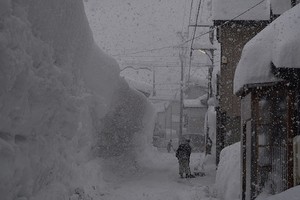THE ASAHI SHIMBUN
August 1, 2023 at 18:23 JST
Third-year junior high school students correctly answered only 12.4 percent of questions, on average, on the government’s nationwide English-speaking test, while 60 percent of students scored a flat zero.
The test was part of the National Assessment of Academic Ability conducted in April covering Japanese, math and English, the results of which were announced on July 31.
Education ministry officials acknowledged that questions on the English-speaking test were relatively difficult.
But they said much needs to be done to improve the students' English-speaking abilities.
“We expect teachers to aggressively work on speaking exercises by setting up scenes that motivate students to speak up during classes,” said a senior education ministry official.
In one question, students were asked to state their opinions and reasons after listening to a speaker state that selling plastic shopping bags should be stopped.
Only 4.2 percent of students received marks for correct answers, the lowest among all the questions.
An English teacher at a public junior high school in Fukuoka Prefecture said it must be difficult for students to express their opinions and reasons on a social issue even in Japanese.
Under the curriculum guidelines fully introduced in April 2021, the education ministry set a goal of students developing communication abilities in English when they are in junior high school.
Students are expected to understand social issues and state their opinions in English.
An English teacher at a public junior high school in Tokyo said class hours are nowhere near enough, though teachers are aware of the need to raise English-speaking abilities.
The teacher also said reading and grammar competency cannot be sacrificed because high school entrance examinations center around them.
Kiyoshi Nobuta, principal at Misaki Junior High School in Misaki, Osaka Prefecture, said he was not surprised by the low percentage of correct answers.
Nobuta, who chairs the Osaka English Teachers’ Association, said he believes students have been put at a disadvantage in acquiring English-speaking capabilities over the past three years due to novel coronavirus restrictions.
He said students have had few opportunities to communicate with each other in English or receive instruction from assistant language teachers due to anti-infection measures in classes.
The National Institute for Educational Policy Research, which designs test questions, said the scenes presented in the questions became complicated because it tried to make them realistic.
The institute said it will improve scene settings in future tests.
The English-speaking test this year was the second following the one in fiscal 2019, in which 30.8 percent of questions were answered correctly.
But the institute said simple comparisons are difficult.
In the English test for listening, reading and writing, students correctly answered 46.1 percent of the questions, compared with 56.5 percent in fiscal 2019.
Sixth-graders at elementary schools also sat for the National Assessment of Academic Ability for Japanese and math in April.




















A peek through the music industry’s curtain at the producers who harnessed social media to help their idols go global.
A series based on diplomatic documents declassified by Japan’s Foreign Ministry
Here is a collection of first-hand accounts by “hibakusha” atomic bomb survivors.
Cooking experts, chefs and others involved in the field of food introduce their special recipes intertwined with their paths in life.
A series about Japanese-Americans and their memories of World War II